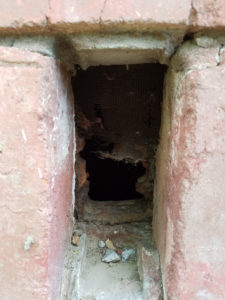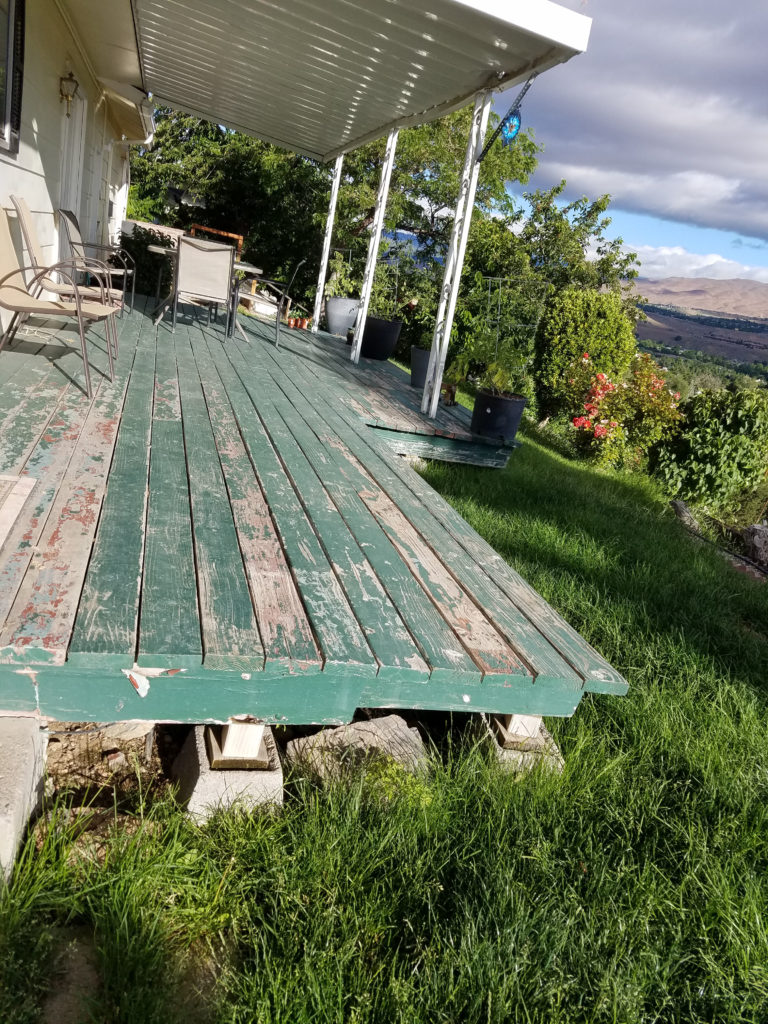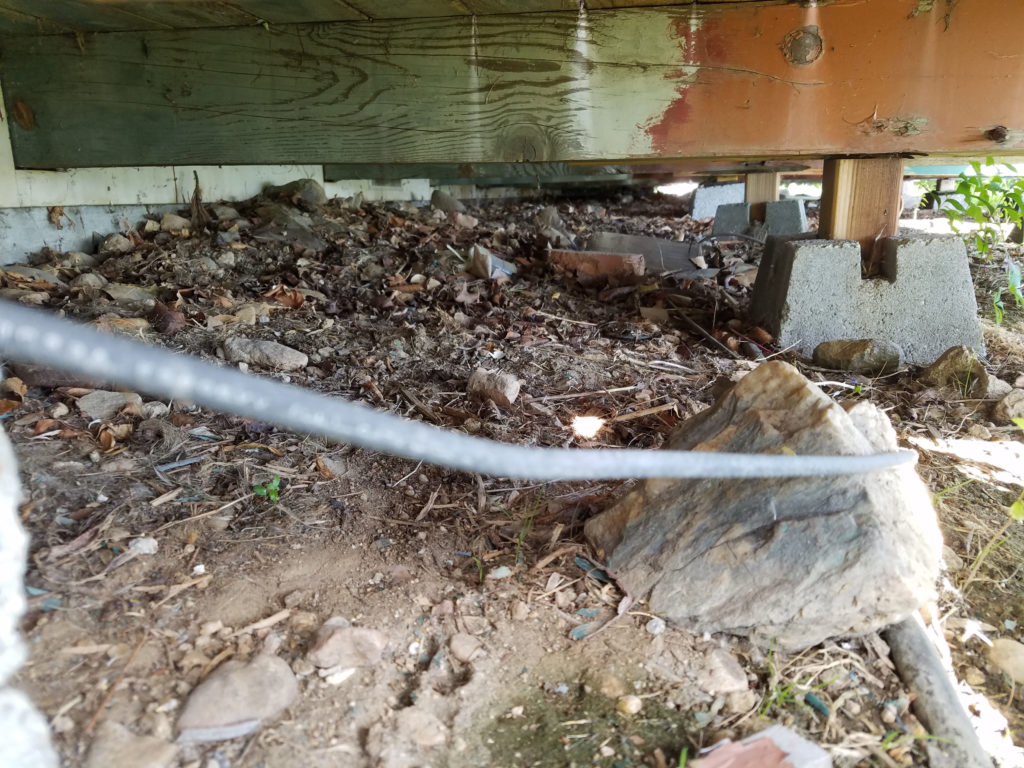Being Ember Aware
July 15th, 2016After experiencing the recent Driscoll Fire, (click here to view last month’s blog) it becomes even more important to continue my efforts to make my home wildfire prepared. I look to the publication, “Be Ember Aware!” for ideas on how to reduce the wildfire threat to my home. This publication contains a list of 22 places around the home that can be vulnerable to ignition by windblown embers produced by a wildfire. During a wildfire, embers can be blown over a mile away from the main flame front and can bombard a home easily igniting these flammable spots. In fact, embers are the major reason why homes are destroyed in wildfires. I won’t review all 22 of the vulnerable areas, but will note some of my home’s problem areas that require attention.
Once I removed the cedar tree in the front yard, (click here for my first month’s blog) it was apparent that our foundation vent had a hole in it and needed to be covered with 1/8-inch wire mesh. If embers were pelting my house, the hole in the vent would have provided an easy entry for embers to blow into the crawlspace and ignite the home.

The hole in the crawlspace vent.
UGH, my weathered deck. Unfortunately, my husband and I have yet to replace or maintain our deck. All decks should be in good condition to resist ember ignition. It’s also a good idea to remove all combustible debris out from under the deck as those are a fire hazard. Even the accumulated litter between deck floor boards can be a source of ignition from embers. A few months ago, my husband and I purchased wooden lattice panels to enclose the deck. However, the publication recommends using “ignition-resistant siding materials”, or 1/8-inch wire mesh to prevent debris and embers from blowing under the deck - I guess we won’t be using those panels.

The condition of my deck. Also note the open space between the deck and the ground.

A view beneath the deck. The dead vegetation under the deck must be removed.
My home “to-do” list continues to get longer and longer but at least I have an idea of how to keep my home safe from embers. For a full list of vulnerable, flammable areas of your home check out the “Be Ember Aware!” publication (click here for the "Be Ember Aware!" publication) Also, keep an eye out for more of my lessons and experiences with these blogs.

Jamie Roice-Gomes
Jamie Roice-Gomes is the outreach coordinator with University of Nevada Cooperative Extension’s Living with Fire Program. She earned her Bachelor of Science in Wildlife Ecology and Conservation and a Master of Arts in Interactive Environmental Journalism. She was a public relations assistant for Conrad Communications, a public information officer intern at the Nevada Department of Conservation & Natural Resources, and a Biological Science Technician at the USDA-Agriculture Research Service. She also enjoys volleyball, the Great Basin Desert, and spending time with family. Contact Jamie at 775-336-0261 or roicej@unce.unr.edu.
